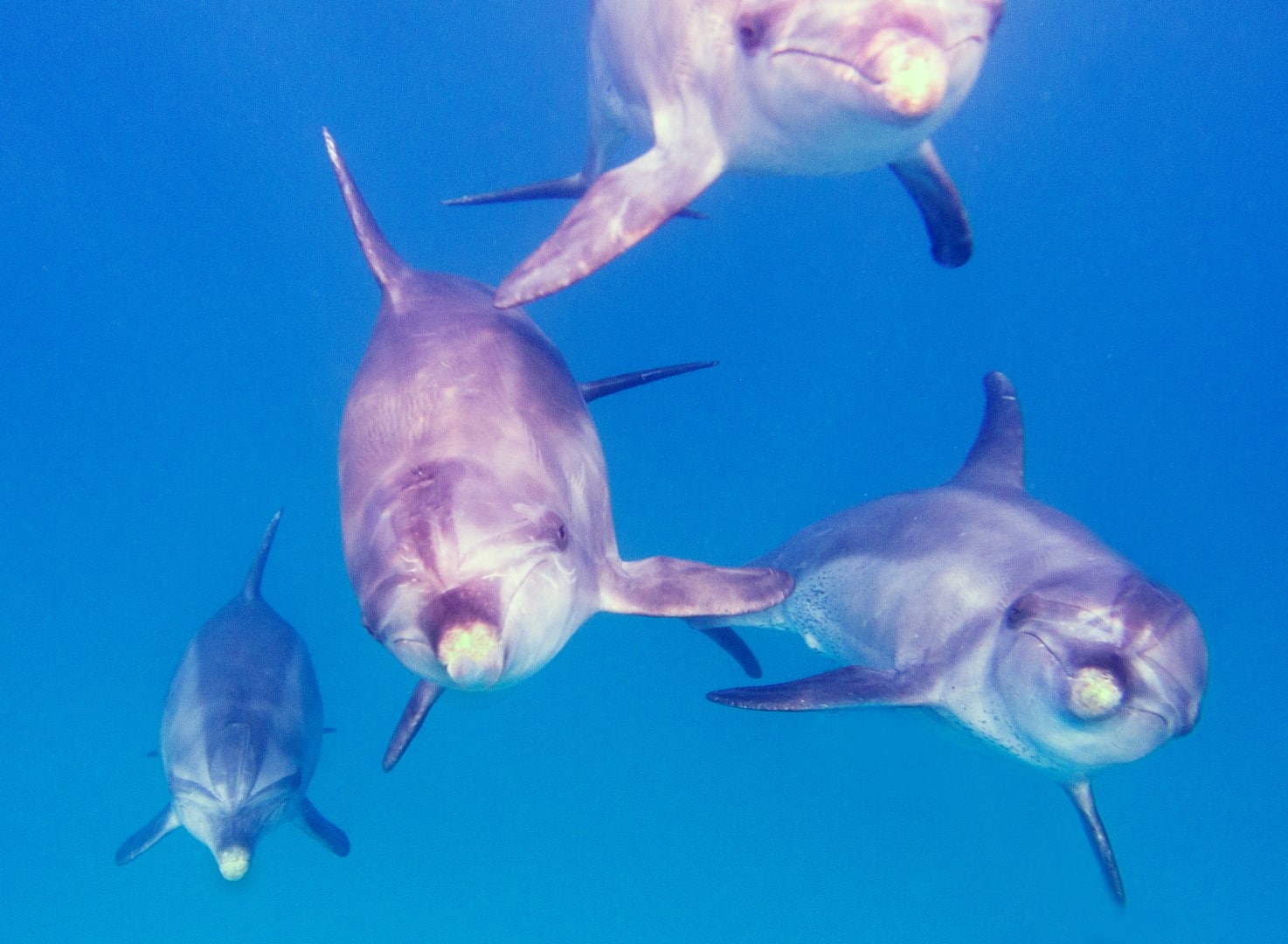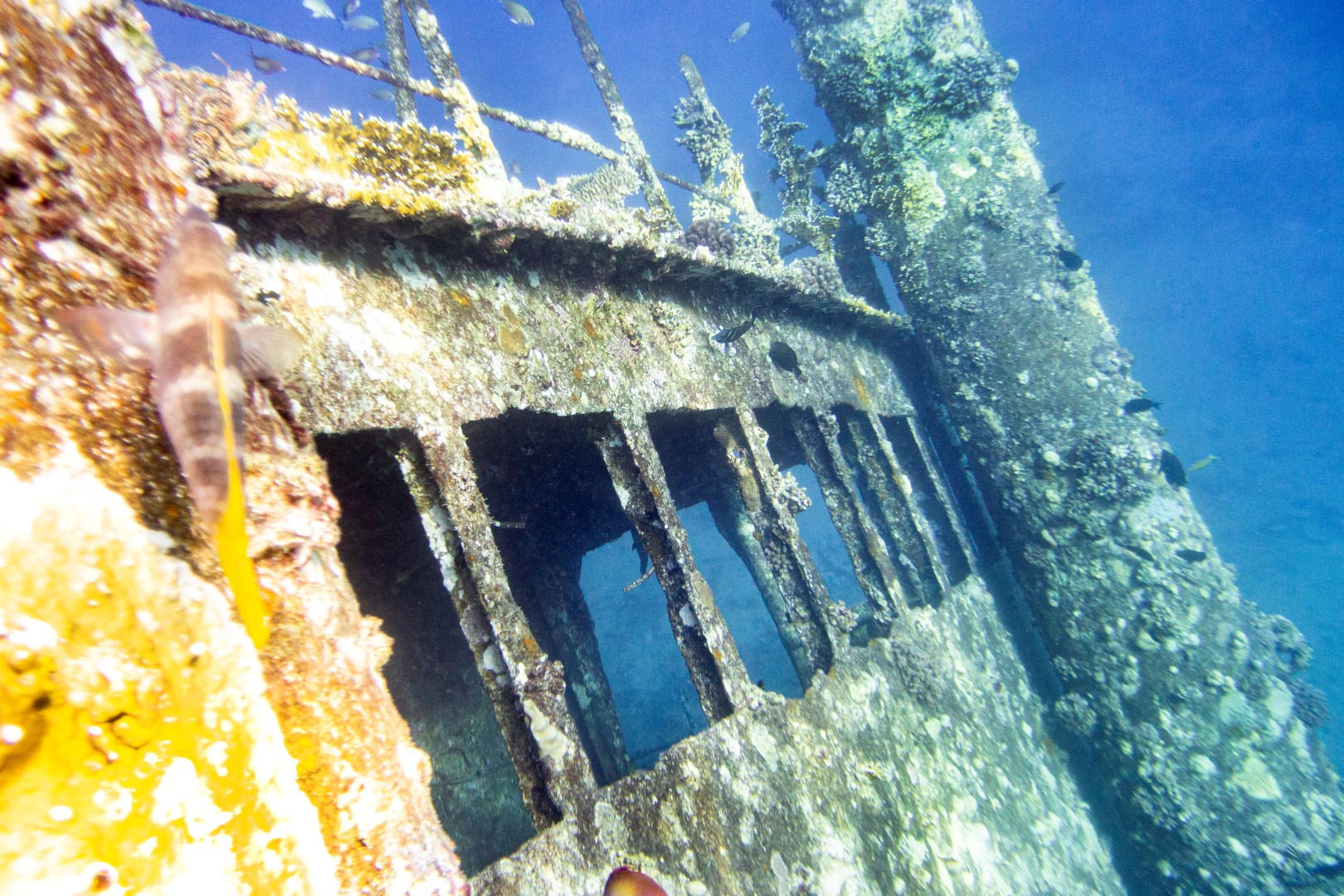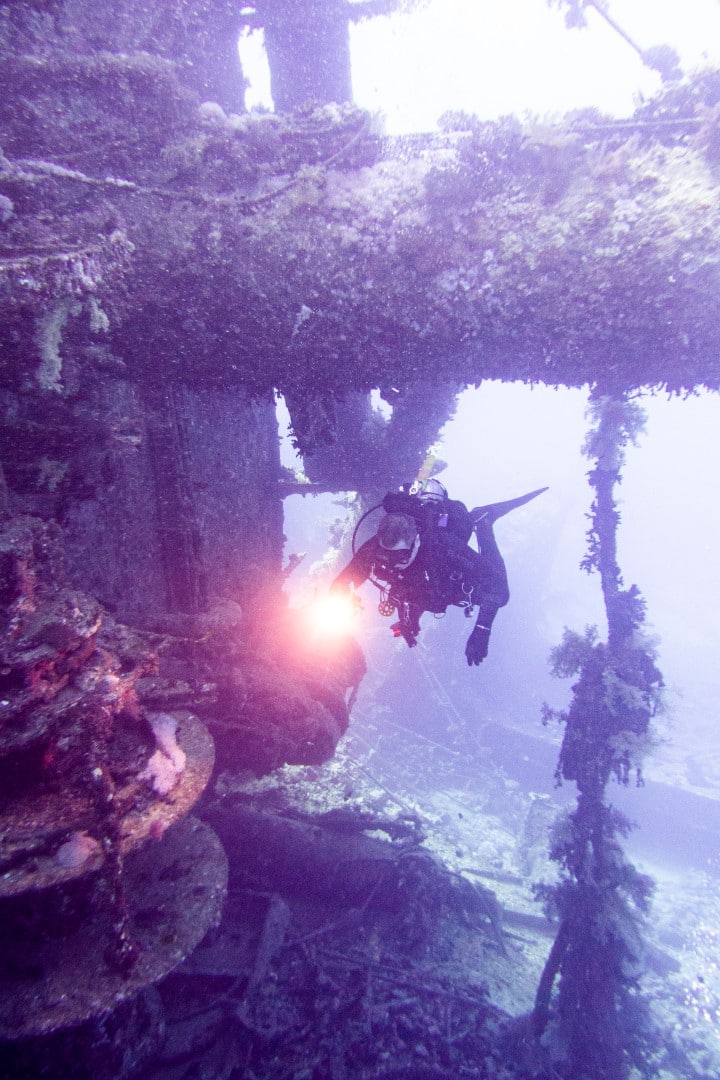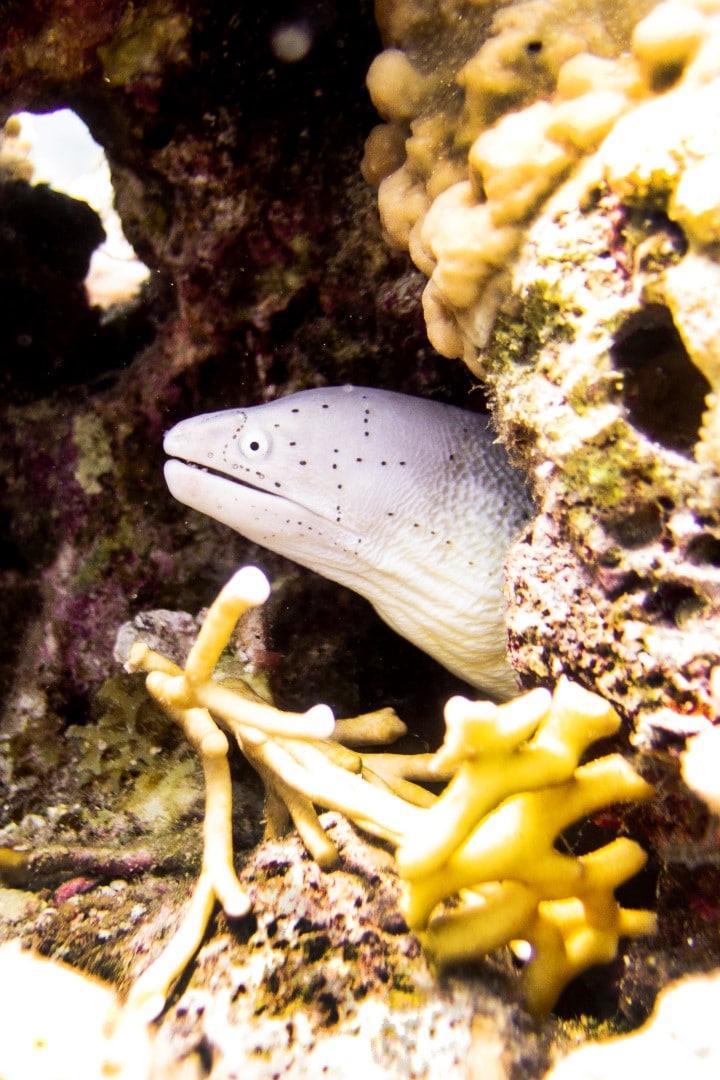News
An insight into Red Sea Reefs & Wrecks + special offer!

Report by John Butland – Diverse Travel – on Emperor Superior…
You would think, wouldn’t you, that when you have been to the same location 17 times that your 18th trip there would be pretty much the same as all the previous times. But that’s the beauty of diving such a wonderful location as the Egyptian Red Sea. There’s always something different to see; an animal you got closer to than before, or display behaviour you’ve never seen before. Perhaps it’s just that you are going back to one of your favourite dive locations. This trip on Emperor Superior’s Reefs & Wrecks Itinerary was all of these for me.

Firstly we headed to the famous Abu Nuhas, not for the wrecks to start with but a check dive on the reef. It wasn’t long before we were diving on the lovely Carnatic wreck. It was as beautiful as ever with the sunlight streaming through the ribs of the deck, illuminating the schools of glassfish that congregate up near the bow. A night dive on the reef followed.
The next day was a full on wreck diving day with three to explore. Giannis D, one of the most recognisable wrecks in the Red Sea, with its mast marking your descent to the wreck itself. The Chrisoula K (Tile Wreck) followed also visiting the Kimon M (Lentil Wreck). Then after a change of location we dived the Carnatic, slightly more broken up than on my last trip.

On a night dive on Beacon Rock, I was privileged to see and video a pair of lion fish mating, not a common sight, But I did have the fright of my life when I suddenly saw a huge moray eel about two feet away. Luckily, he wasn’t as surprised as me and swam nonchalantly off.
Emperor’s Reefs & Wrecks itinerary is a great way to reacquaint yourself with the dive sites that would normally be accessible from Sharm El Sheikh, namely Ras Mohamed and Tiran. I, like many, have dived Shark & Yolanda Reefs on numerous occasions but it’s still such an enjoyable dive and always a little bit different. This time there were big schools of unicornfish all around the wreck of the Yolanda; I’ve never seen so many there.
Eventually we arrived at Tiran, a part I was particularly looking forward to, especially when I heard the first dive was on Jackson. I have maintained a love of this place since I first visited in 2002. One of my favourite places in the whole world. The water was so clear and awash with lined butterfly fish, I have never seen so many together anywhere in the world.

A dive on Thomas Reef followed and was almost as enjoyable. Although a strong down current at the end made the safety stop a bit of a challenge, to be honest a timely reminder of the skills you have learned during training and over the years of diving. Well, what can I say about the Thistlegorm that hasn’t been said before, apart from we had two lovely dives, one outside and one inside.
Two dives on the Barge followed, one at night and one the following day. Although a very small and broken wreck it’s absolutely covered in life. Lots of loitering squirrel fish. There were a few of the more unusual carnivores like a pair of crocodile fish and the shaggiest stonefish I have ever seen. Plus, of course, the long-time resident of the boat, a huge moray eel called George. He poses nicely for both photos and video.
No Northern Red Sea liveaboard would be complete without a couple of dives at Dolphin House, one day and one night. Unlike the last time I was there, we didn’t see any dolphins during the dives. But the crew of Emperor Superior are very keen to help their guests get the best experience so kept an eye out. Eventually the cry of ‘dolphins’ went up and we grabbed our masks, snorkels, fins and cameras and dashed to the zodiacs. We weren’t disappointed as we swam with a group of four for almost an hour. A great end to the week.

Many thanks to Emperor Superior, your great guides, chefs and boat crew, plus the other guests on board for making it such a memorable week. My 18th trip to the Red Sea, but definitely not my last.
Want to be there? Special offer:
Emperor Elite, Reefs & Wrecks
24th – 31st Jan 2020
From £1149 per person including:
Flights, 7 nights in shared cabin, 3 meals a day, soft drinks, red wine with dinner, 6 days’ diving, guide, 12ltr tank & weights, Marine Park and port fees. Free Nitrox. Return airport transfers. 20kgs baggage allowance. Full ATOL protection.
Not included: Egyptian Visa ($25), equipment rental, 15ltr tanks, crew tips, alcohol other than above. Options for final day (£10 to £45).
For more information visit www.diversetravel.co.uk or call 01473 852002 or email info@diversetravel.co.uk
News
Book Review: Fire on Monroe Bravo by Fred Lockwood

Fire on Monroe Bravo is the latest book in the Jack Collier series by Fred Lockwood. Our story begins with our lead characters, Jack and Sandro, owners of Marine Salvage & Investigation Company, arriving on the Monroe Bravo Oil & Gas Platform in the North Sea. Having secured a contract for their vessel the MV Stavanger to act as support ship to the platform for TransGlobal Oil, our protagonists are on a celebratory visit.
However almost as soon as they arrive a series of explosions rock the platform, causing huge damage, loss of life and the very real danger of a massive human, ecological and financial disaster.

As the danger mounts for both our heroes and the surviving workers, Jack and Sandro will have to escape the inferno, all while trying to save the platform and the men still trapped unable to help themselves.
The disaster sets the scene for the unfolding story lines following the fate of the platform and our main characters, the police investigation into a suspected terrorist act and the actions of TransGlobal Oil as they attempt to navigate the pubic outcry and financial repercussions.
In his eighth book, Fire on Monroe Bravo, Fred Lockwood delivers an explosive thriller, with plenty of above and in-water drama, and our heroes fighting for survival, what more can you ask for?
We thoroughly recommend this read and look forward to the next in the series. For more information about his book series, you can check out the reviews of his previous books here on Scubaverse.
- Title: Fire On Monroe Bravo
- Author: Fred Lockwood
- ISBN: 979-8325324536
Available in a paperback version and for Kindle from Amazon and book stores.
Blogs
Alonissos: The complete diving destination (Part 1)

In June we were incredibly fortunate to be invited to dive in Alonissos, a small Greek Island in the Sporades island chain located in the North Aegean Sea. While I have long been a big fan of the Greek Islands as a great holiday destination, I had not had the opportunity to do any diving on previous visits and Mike and I were extremely excited to see what Alonissos had to offer both above and below the surface!

The Sporades are easily accessible via the airport in Skiathos (the first island in the chain), which is served by Jet2 flights from all major UK airports from May through October. Numerous ferries and charter boats make island hopping from Skiathos Town a breeze. After an hour boat ride, the picturesque port of Patitiri was a wonderful introduction to Alonissos, where we were met by our gracious hosts Kostas of Albedo Travel and Dias of Alonissos Triton Dive Center. Mike and I were delighted to be staying at the Paradise Hotel, aptly named for its stunning views over the sea and great location for walking to the waterfront.

Alonissos is beautifully situated in the National Marine Park of Alonissos and the Northern Sporades, the largest marine protected area in Europe. The surrounding seas offer fabulous marine life, including incredibly rare species such as the Mediterranean monk seal. They boast deep walls covered in gorgonians and sponges, stunning topography with caverns, swimthroughs and pinnacles, and the first accessible ancient shipwreck from 500BC!

In locations where historical sites have been reported, the waters are largely restricted, but with collaboration between government, underwater archeologists and dive centres, incredible underwater museums are being created for a truly unique diving experience. Alonissos is home to the first of these, the Ancient Shipwreck of Peristera Accessible Underwater Archeological Site. The chance to dive into history (along with reports of healthy reef life and amazing underwater topography) meant Mike and I were keen to get in the water.

Our introduction to the diving around Alonissos was at the Agios Georgios Pinnacles, in the channel between Alonissos and Skopelos. This fantastic site was named “The Chimney,’ and proved to have a huge amount to see. We got to a decent depth here (over 25m), and marvelled at a colourful reef wall with a wonderful swim through whose rocky walls were absolutely covered with life. As well as brilliant topography there was no shortage of macro life here. We saw numerous nudibranchs, five different species in total. The second dive at Mourtias reef nearby was a shallower dive along a nice wall with lots of crevices. Several moray eels and grouper called this site home. We enjoyed looking in the crevices for lobster and smaller benthic life, such as cup corals and tunicates.

Our itinerary allowed us two dives a day with afternoons left to explore the island with our hire car and evenings to enjoy the famous Greek hospitality. This proved to be a lovely mix of in-water and land based diversions.

The next days diving to the Gorgonian Gardens and Triton’s Cave was to be even better! These two stunning sites are nothing short of fabulous. The Gorgonian Gardens was a deep wall near to the Agios Georgios islands. The ever-present currents in this deep channel meant that the sea life was amazing … the namesake Gorgonian sea fans dotted the wall at a depth of 30 to 50 meters, getting ever larger the deeper we went. Above 30m was by no means less beautiful, with sponges, corals, scorpionfish, moray eels and some rare and colourful nudibranchs.

The second shallower dive of the day was to Triton’s Cave or the Cavern of Skopelos, on the east side of that island. The spectacular rock formations had wild striations both above and below the water making a truly epic topography. The cavern entrance was at 14m, and big enough for a buddy pair, winding up to 6m and passing two beautiful windows out into the blue. Emerging from the cavern, the light at the shallower depths and the incredible rock formations made for a fantastic gentle swimming safety stop and we all surfaced by the boat with massive grins.

Check out our next blog :Alonissos: The complete diving destination (Part 2)” to hear about our amazing dive on the 2500 year old Peristera Wreck!
Thanks to:
Alonissos Triton Dive Center https://bestdivingingreece.com/
Albedo Travel https://alonissosholidays.com/activities/
Paradise Hotel https://paradise-hotel.gr/
Alonissos Municipality https://alonissos.gr/en/
-

 Blogs2 months ago
Blogs2 months agoDiving With… Nico, Ocean Earth Travels, Indonesia
-

 News1 month ago
News1 month agoMurex Bangka Announce New Oceanfront Cottages & Beachfront Dining
-

 Blogs2 months ago
Blogs2 months agoA new idea in freediving from RAID
-

 Marine Life & Conservation1 month ago
Marine Life & Conservation1 month agoIceland issue millionaire whale hunter a licence to murder 128 vulnerable fin whales
-

 Marine Life & Conservation2 months ago
Marine Life & Conservation2 months agoThe Shark Trust Great Shark Snapshot is back
-

 News3 months ago
News3 months agoCharting New Waters; NovoScuba Goes Global with the Launch of their Revolutionary Dive Training Agency!
-

 Gear News1 month ago
Gear News1 month agoNew Suunto Ocean – a dive computer and GPS sports watch in one for adventures below and above the surface
-

 Marine Life & Conservation Blogs2 months ago
Marine Life & Conservation Blogs2 months agoBook Review: Plankton















